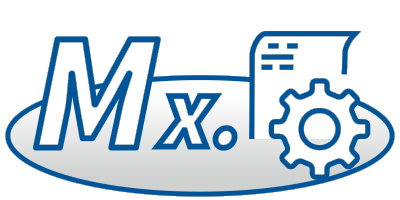IBM Sub-Capacity licensing for Informix and Db2
Processor-based licensing with full- and sub-capacity in virtual environments
 If Informix or DB2 are to be used in virtual environments, the question of how to calculate licenses quickly arises with processor-dependent licenses. Is a calculation based on logical resources sufficient or must the physical hardware be fully licensed?
If Informix or DB2 are to be used in virtual environments, the question of how to calculate licenses quickly arises with processor-dependent licenses. Is a calculation based on logical resources sufficient or must the physical hardware be fully licensed?
IBM offers two concepts for this: Full-capacity for the licensing of the entire physical resources, sub-capacity for licensing using the resources of a virtual environment.
This article is a brief summary of the various IBM sources for licensing Informix or Db2 in virtual environments. It introduces the common processor-based licensing and the associated definitions for full- and sub-capacity. This article also provides a summary of the general requirements and important information about the verification requirements when using sub-capacity licensing.
Overview
-
Introduction Processor Core
-
VPC - Virtual Processor Core licensing
-
PVU - Processor Value Unit licensing
PVU - licensing with full-capacity
PVU - licensing with sub-capacity -
LUS - Limited Use Socket licensing
LUS - licensing, full- and sub-capacity -
Sub-capacity licensing, general requirements and important verification requirements
Please note
- The license models are partially considered here against the background of the full- or sub-capacity concepts.
For a complete reference, the license terms of the respective products are to be consulted.
Introduction Processor Core
The main basic of processor-based licensing is the definition of the Processor Core.
Here is an example as an excerpt from the IBM Db2 Advanced Edition 11.5 licensing:
-
A Processor Core is a functional unit within a computing device that interprets and executes instructions. A Processor Core consists of at least an instruction control unit and one or more arithmetic or logic unit.
-
A Virtual Processor Core is a Processor Core on a Virtual Server created by partitioning the resources available to a physical Server or an unpartitioned physical Server.
VPC - Virtual Processor Core licensing
With the introduction of VPC licensing in 2019, IBM has significantly simplified processor-based licensing.
-
VPC licensing is based purely on the number of processor cores. A license must be purchased for each processor core available to the program.
-
VPC licensing does not distinguish between physical and virtual cores.
This means transparent, easily scalable (and in case of an IBM audit robust) licensing.
Note: As of 10 May 2022, the VPC metric is also a sub-capacity metric. This means that for all products licensed under sub-capacity according to the VPC metric, the use of IBM's License Metric Tool ILMT must be considered.
PVU - Processor Value Unit licensing
PVU licensing is based on the performance of a physical server.
-
IBM evaluates the performance of a server and maps this to the processor core using a point scheme.
-
Typical values are 50 to 120 points per core. These points per core are the Processor Value Units (PVUs) of IBM.
-
The scope of a license is determined by the number of cores of a server, multiplied by the assigned PVUs per core.
The evaluation of the cores is mainly based on the performance of the processor type, but also on the number of processors, the server model and the operating system that is used.
The assignment of PVUs to the core of a server is published by IBM in tables and updated as required.
The following information should be available before a search is made to determine the PVU values:
| RISC systems • Manufacturer • Processor name • Server model • Number of processors (sockets) • Processor model number |
x86 systems • Manufacturer • Processor Name • Processor model number • Number of processors (sockets) |
» You can view the IBM PVU valuation tables here ...
PVU - licensing with full-capacity
Full-capacity means the licensing of the entire physical server and also represents the upper limit for licensing.
-
All processor cores activated* in a physical hardware environment that are available to or managed by the program must be licensed here.
* An enabled processor core is a processor core that is available for use in a physical or virtual server, regardless of whether the capacity of the processor core may or may not be limited by virtualization technologies, operating system commands, BIOS settings, or similar restrictions.
The term "enabled processor core" is more clearly defined in the context of managing resources under IBM Power Systems (Capacity on Demand). A processor core may be enabled, but does not (yet) need to provide resources. With the activation, the basis for use by the program is given. On other platforms IBM extends this background and interprets the cores of a physically existing (built-in) processor as activated. This means that processors that are switched off by settings in the BIOS are also considered activated processors.
PVU - licensing with sub-capacity
Physical servers can host virtual servers that may provide a reduced set of physical resources.
- Sub-Capacity aims to license only those resources made available through (one or more) virtual servers.
IBM states it in the Passport Advantage regulations as follows:
Generally, for each eligible product installed in an eligible virtualization environment, a license at the lower of the following values must be purchased:
-
PVUs for the maximum number of virtual cores in the virtual machines (VMs) available to the qualifying product at any given time (sub-capacity); or
-
PVUs for the maximum number of physical cores on the server that are available to the approved product at any given time (full-capacity).
Sub-capacity licensing is permitted by IBM under certain conditions and requires compliance with a comprehensive set of rules. This includes the software-supported determination and logging of resources using the IBM License Metric Tool (ILMT).
Please note: in the case of an audit, it is assumed that the maximum number of cores that has ever been available to a program must be licensed.
» The IBM platform-specific notes on counting cores can be found here ...
» Further IBM notes on determining cores on x86 platforms can be found here ...
LUS - Limited Use Socket licensing
Socket licensing is no longer offered for Db2 and Informix by IBM. However, existing installations are still licensed under this metric and will be checked against this background in case of an audit.
-
The purpose of socket licensing is to license each socket of a server with an installed CPU.
The definition of a socket is described in detail by IBM, extract Informix Workgroup Edition 14.10:
"Limited Use Socket" is a unit of measure by which the Program can be licensed. A socket is electronic circuitry that accepts a processor chip. A server is a physical computer that is comprised of processing units, memory, and input/output capabilities and that executes requested procedures, commands, or applications for one or more users or client devices. Where racks, blade enclosures, or other similar equipment is being employed, each separable physical device (for example, a blade or a rack-mounted device) that has the required components is considered itself a separate server.
LUS - licensing, full- and sub-capacity
With the socket licensing, virtualization and sub-capacity were put in the foreground. Physical and virtual servers are generally mapped to virtual servers here.
A virtual server is either a virtual computer created by partitioning the resources available to a physical server that complies with the requirements of the Sub-Capacity Guide or the unpartitioned physical server.
-
The licensee must purchase limited-use socket permissions (sub-capacity) for each socket in the virtual servers available to the program.
If the licensee's virtualization environment does not meet the requirements in the Sub-Capacity Guide, the entire physical server must meet all the requirements of this license (this is aimed at the product-specific license terms, e.g. the upper limit of a maximum of four sockets in the server).
Sub-capacity licensing, general requirements and documentation to be provided by the licensee
For a sub-capacity licensing the following conditions are required.
If one of these conditions cannot be met, full-capacity licensing must be obtained.
- The IBM product must be approved for sub-capacity licensing.
This includes almost all products that can be licensed processor-based, except some WebSphere MQ products. The approved products can be viewed here:» Use Eligible Sub-capacity Products (52KB) 24 January 2018 ...
- A virtualization technology approved by IBM must be used.
The approved virtualization technologies can be viewed here:» Use Eligible Virtualization Technologies (294KB) 20 June 2022 ...
- A processor technology approved by IBM must be used.
The approved processor types can be viewed here:» Use Eligible Processor Technologies (29KB) 20 June 2022 ...
- The IBM License Metric Tool (ILMT) must be installed.
The use of the ILMT is recommended for full-capacity licensing and is required for sub-capacity licensing.» Further information on the ILMT can be found here ...
In which cases is the licensing permitted without using the ILMT?
- If it is an IBM approved virtualization environment that is not yet supported by the ILMT. In this case, customers must regularly check whether a suitable version becomes available and then use the ILMT.
-
If the following conditions apply:
a.) the licensee's company has fewer than 1,000 employees, including contractors (leased employees, temporary workers); and
b.) the licensee is not a service provider (a company that provides IT services to end users either directly or through a reseller); and
c.) no contract was concluded with a service provider for the administration of the IT environment; and
d.) the total physical capacity of the enterprise servers, measured on a full-capacity basis and assuming that the installation is equivalent to sub-capacity licensing, is less than 1,000 PVUs.
If all the points a.) to d.) apply, the use of the ILMT can be waived.
- If the underlying servers are licensed under full-capacity.
(Source: https://www.ibm.com/software/passportadvantage/ibmlicensemetrictool.html)
Waiving of the ILMT and manual documentation
If the use of the ILMT can be waived, the licensee must manually document his virtualization environment at least once per quarter.
In addition to hardware and virtualization specifications, this also includes the calculation of the required PVUs for the IBM products used. The reports to be signed by the responsible person must be kept for at least two years and important documents for a possible license audit must be kept.
» For a manual report you can download a sample template from IBM here
![]() Further questions about IBM Db2 or Informix licensing ?
Further questions about IBM Db2 or Informix licensing ?
Just contact us via chat or our contact form!

























